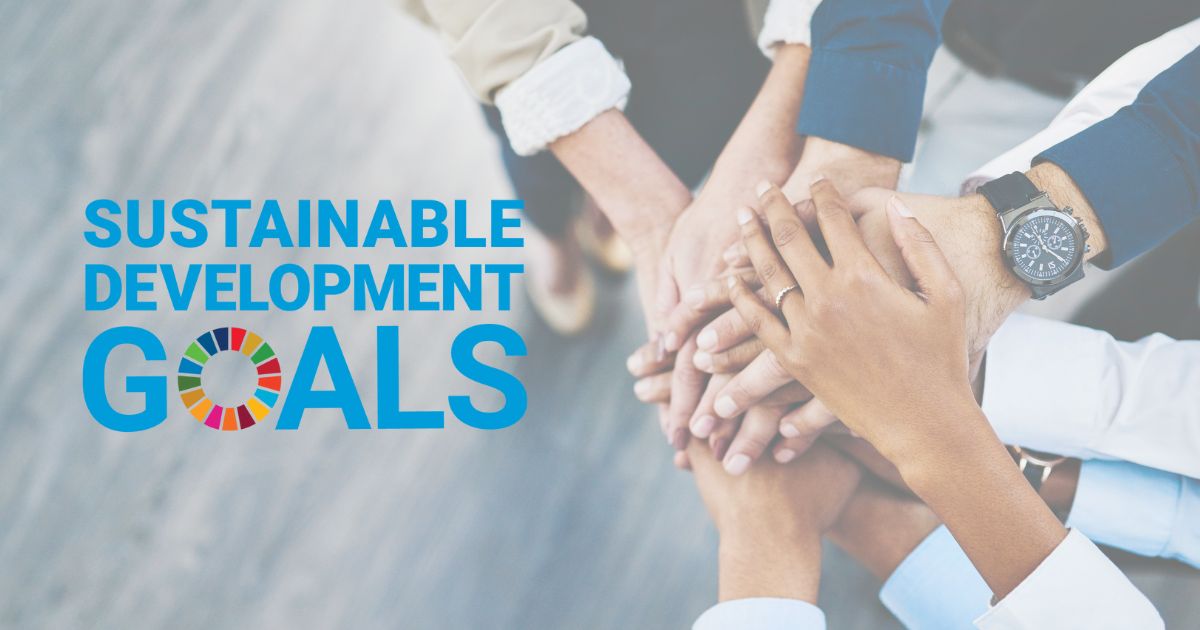The Sustainable Development Goals (SDGs) which set out the targets to improve socio-economic wellbeing across global communities by 2030 have received a lot of attention as stakeholders from across various sectors seek to create a better world. There are seventeen goals the United Nations have outlined, including Gender Equality (SDG 5), Affordable Clean Energy (SDG 7), and Climate Action (SDG 13) [1]. Meeting some of these targets can be easier to do for some businesses than others, but one particular goal often gets overlooked when it comes to business operations: Collaboration Towards the Goals (SDG 17). Collaboration, however, provides a swathe of opportunities for businesses to improve their sustainability, and maximize their impact [2].
A Circular System
“Delivering on climate change commitments is going to depend on industries and the Government working closely together,” explains Alison Kay, Ernst & Young Managing Partner for Client Service UK&I [3], “Businesses need a framework that supports investment and governments need entrepreneurs who can turn ambition into action. Bringing businesses together and sharing their findings with the Government, we hope to make that action better targeted and ultimately more successful.” This means that businesses working together on a range of sustainability projects can lead to breakthroughs at a national or international level in terms of technology, policy, and best practice [2].
The impact of sustainability through collaboration can be exemplified by several projects, for example:
- Lithium battery recycling: where electric vehicle companies or battery manufacturers pool their resources to reduce waste and create a more circular system [4, 5].
- Manure and innovation: American dairy farmers are working together to reduce their carbon emissions by finding usage for the waste created by their operations [6].
- Pooled e-commerce packaging: the creation of a sustainable supply chain by online companies that handles the sustainable packaging of their products [7]; and even
- General advisory groups: Tapping into the wealth of knowledge of activist organizations, consultancy groups, or academia to better inform business policies [2, 8].
Recognizing Opportunities
Businesses working within the same sector and location should work together to find opportunities to reduce their environmental impact across their shared supply chains. Obviously, this requires a high amount of trust between entrepreneurs, but the benefits of working together and pooling resources open opportunities to create a circular system that can provide a blueprint for companies in different industries [2, 3, 6, 7]. Have you considered where you could further reduce your carbon impact and promote sustainability through business collaborations?
Key Takeaways
- Collaboration is a key sustainable development goal [1].
- Working with other businesses can yield far larger impacts on reducing carbon emissions and sustainability [2 – 8]; and
- Opportunities exist in all business fields, and pooling resources can lead to technological breakthroughs that can have much larger ramifications [2, 3, 6].
- Read more about the UN SDGs – https://sdgs.un.org/goals
References
[1] United Nations, 2022, “Do you know all 17 SDGs?” United Nations.
[2] Joana Kleine Jäger, 2020, “Will you be my partner? Collaborations in the circular economy”, Circle Economy.
[3] Alison Kay, 2021, “Why collaboration is key to tackling climate change”, Ernst & Young.
[4] Shel Evergreen, 2022, “Lithium costs a lot of money—so why aren’t we recycling lithium batteries?”, Ars Technica.
[5] Md Tasbirul Islam and Usha Iyer-Raniga, 2022, “Lithium-Ion Battery Recycling in the Circular Economy: A Review.” Recycling, 7, 33.
[6] Ram Nidumolu, Jib Ellison, John Whalen, and Erin Billman, 2014, “The Collaboration Imperative”, Harvard Business Review.
[7] Jacqueline Poh, 2022, “3 ways we can collaborate better for a stronger circular economy”, World Economic Forum.
[8] Vincent Diringer, 2022, “Dialogue Between Activists and Businesses – Key to Creating a Sustainable World”, LEAD-WiSE.
